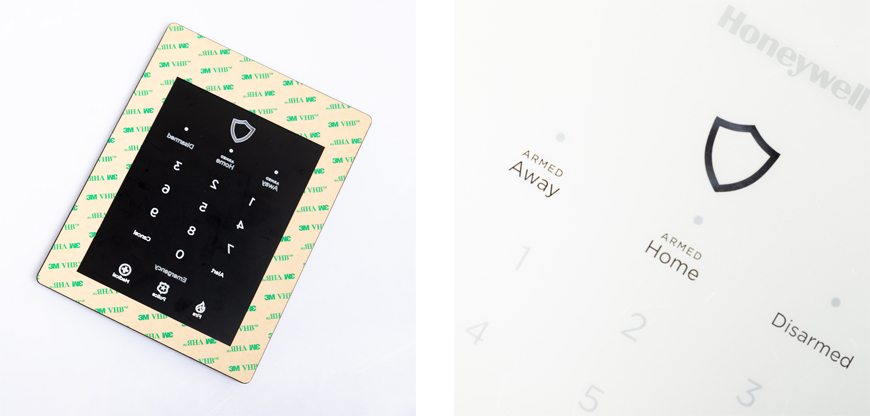In today's tech-savvy world, membrane switches have become an integral part of various electronic devices, from microwave ovens to medical equipment. These thin, flexible, and cost-effective interfaces have revolutionized the way we interact with machines. If you're curious about how to make a membrane switch, this article will guide you through the process, step by step.

1. Introduction
2. Understanding Membrane Switches
· What is a Membrane Switch?
· Components of a Membrane Switch
3. Materials Needed
· Substrate Material
· Conductive Materials
· Graphic Overlay
· Adhesive
4. Designing Your Membrane Switch
· Layout and Graphic Design
· Circuit Design
· Tactile Feedback
5. The Manufacturing Process
· Preparing the Substrate
· Printing the Circuit
· Assembling Layers
· Testing
6. Quality Control
7. Applications of Membrane Switches
8. Advantages and Disadvantages
· Advantages
· Disadvantages
9. Maintenance and Troubleshooting
10. Conclusion
11. FAQs
Membrane switches are an essential part of modern technology, serving as user interfaces in a wide range of applications. Whether you're building a control panel for industrial machinery or a keypad for a consumer device, understanding how to make a membrane switch is crucial.
What is a Membrane Switch?
A membrane switch is a low-profile, flexible electrical switch with a design that allows users to operate it by pressing on the overlay. These switches consist of multiple layers, including a graphic overlay, circuit, and adhesive spacer. When pressure is applied, the top layer flexes, making contact with the circuit beneath it and completing the electrical connection.
Components of a Membrane Switch
A typical membrane switch comprises the following components:
· Substrate Material
· Conductive Materials
· Graphic Overlay
· Adhesive
Substrate Material
The substrate material serves as the base layer of the membrane switch and provides structural support. Common materials used include polyester, polycarbonate, and polyimide.
Conductive Materials
Conductive materials, such as silver ink or copper traces, are used to create the circuit paths on the membrane switch. These materials enable the flow of electrical current when the switch is pressed.
Graphic Overlay
The graphic overlay is the top layer of the membrane switch and features printed icons, text, and graphics. It is essential for user interaction and aesthetics.
Adhesive
An adhesive spacer layer is used to bond the various layers of the membrane switch together, ensuring durability and longevity.
Layout and Graphic Design
When designing a membrane switch, consider the layout of buttons and the visual aesthetics of the graphic overlay. The design should be user-friendly and intuitive.
Circuit Design
Creating an efficient and reliable circuit is crucial for the switch's performance. Ensure that all connections are correctly designed to prevent malfunction.
Tactile Feedback
Tactile feedback refers to the physical response users feel when pressing a button on the membrane switch. Designing for a satisfying tactile feel is important, especially for user comfort.
Preparing the Substrate
The first step in manufacturing a membrane switch involves preparing the substrate material by cutting it to the desired shape and size.
Printing the Circuit
Conductive materials are printed onto the substrate to create the electrical pathways. Precision is key to ensure proper functionality.
Assembling Layers
Layers, including the graphic overlay and adhesive spacer, are carefully assembled to create a sandwich-like structure.
Testing
Thorough testing is conducted to ensure that all buttons and circuits function correctly before final assembly.
Quality control measures are implemented to maintain high standards and ensure that each membrane switch meets performance criteria.
Membrane switches find applications in various industries, including medical devices, aerospace, automotive, and consumer electronics.
Advantages
· Cost-effective
· Thin and lightweight
· Customizable designs
· Water and dust resistant
Disadvantages
· Limited tactile feedback
· Limited lifespan compared to mechanical switches
Maintaining membrane switches involves regular cleaning and inspection for wear and tear. Troubleshooting may be required if any buttons stop working.
Membrane switches have transformed the way we interact with electronic devices. Understanding how to make a membrane switch is valuable for businesses and individuals involved in electronics manufacturing. By following the steps outlined in this guide, you can create reliable and user-friendly membrane switches for various applications.
Can I repair a damaged membrane switch?
In some cases, minor repairs can be made by carefully cleaning or reflowing solder joints. However, extensive damage may require replacement.
Are membrane switches suitable for outdoor use?
Membrane switches can be designed to be water and dust resistant, making them suitable for outdoor applications.
What is the typical lifespan of a membrane switch?
The lifespan of a membrane switch can vary depending on usage but is generally in the range of 1 to 10 million actuations.
Can I design a custom graphic overlay for my membrane switch?
Yes, graphic overlays can be customized to match the design and branding of your product.
Are membrane switches more cost-effective than mechanical switches?
Yes, membrane switches are generally more cost-effective, making them a popular choice for many applications.